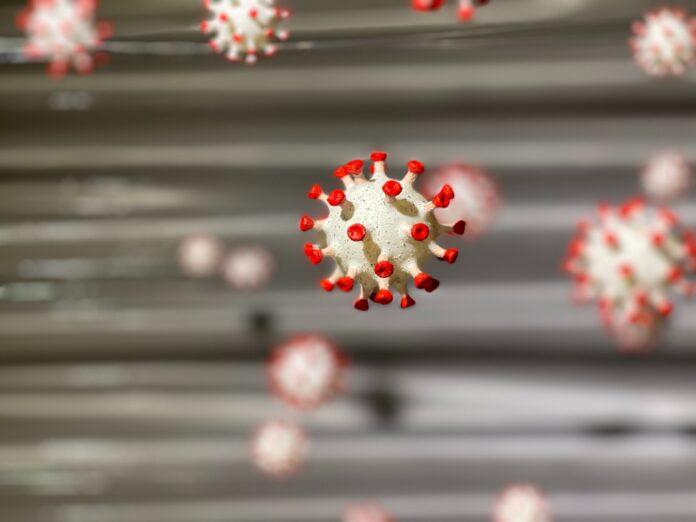NeoCoV, a korona vīruss strain related to MERS-CoV found in bats (NeoCoV is not a new variant of SARS-CoV-2, the human korona vīruss strain responsible for COVID-19 pandemic) has been reported to be the first case of a MERS-CoV variant using ACE2. NeoCoV has potential of human emergence with both high fatality and transmission rate.
NeoCoV ir MERS-CoV radniecīgs celms, kas izmanto sikspārņu ACE 2 receptorus tā iekļūšanai un inficēšanai sikspārņu šūnās. Tomēr celmi no MERS-CoV izmanto DPP4 receptorus, lai iekļūtu šūnās. Ir svarīgi atzīmēt, ka NeoCoV nav jauns variants SARS-CoV-2 kas ir izraisījis pasaules mēroga pandēmiju kopš tās parādīšanās 2019. gada novembrī.
This article shows that NeoCoV and its close relative PDF-2180-CoV is able to efficiently bind to ACE 2 receptors in bat, but bind less favourably to human ACE 2 receptors. Studies using cryo-electron microscopy revealed a distinct vīruss-ACE 2 binding surface in case of binding of NeoCoV and PDF-2180-CoV to ACE 2 receptors. A molecular determinant implicates Asp 338 residue, that prevents NeoCoV from binding to human ACE 2 receptor. In addition, a T510F mutation in the receptor binding motif of NeoCoV causes it to efficiently bind human ACE 2 receptor.
Given the high fatality rate of 35% associated with MERS-CoV related vīrusi derived from Beta CoV lineage, the NeoCoV could pose a potential threat to emergence of a high transmissible strain of NeoCoV and PDF-2180-CoV (upon gaining the T510F mutation due to antigenic drift) that can cause infection and mortality in humans, far worse than the current pandemic. Antigenic drift refers to random genetic mutācijas kas izraisīja izmaiņas proteīns struktūra, tādējādi mainot proteīna spēju saistīties ar noteiktu receptoru. Turklāt infekciju, ko izraisa NeoCoV T510F mutācija, nevarēja neitralizēt antivielas, kuru mērķis ir SARS-CoV-2 vai MERS-CoV.
The entire global community hopes that the mutation in NeoCoV and PDF-2180-CoV that causes it to efficiently bind to human ACE 2 receptor, remains a laboratory study to understand the virulence of these vīrusi, and it doesn’t become a case of zoonotic transmission from bats to humans, creating another worldwide chaos.
***
Avots:
Jans H., un citi 2022. gads. MERS-CoV tuvi radinieki sikspārņiem izmanto ACE2 kā savus funkcionālos receptorus. Pirmsdrukas bioRxiv. Publicēts 25. gada 2022. janvārī. DOI: https://doi.org/10.1101/2022.01.24.477490






































